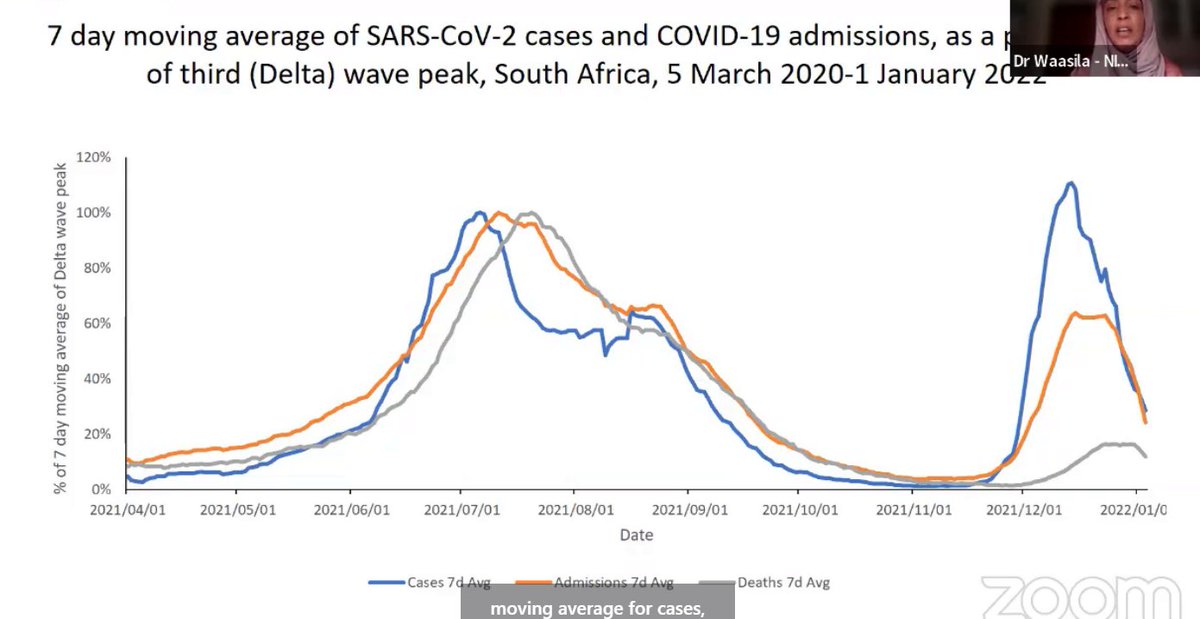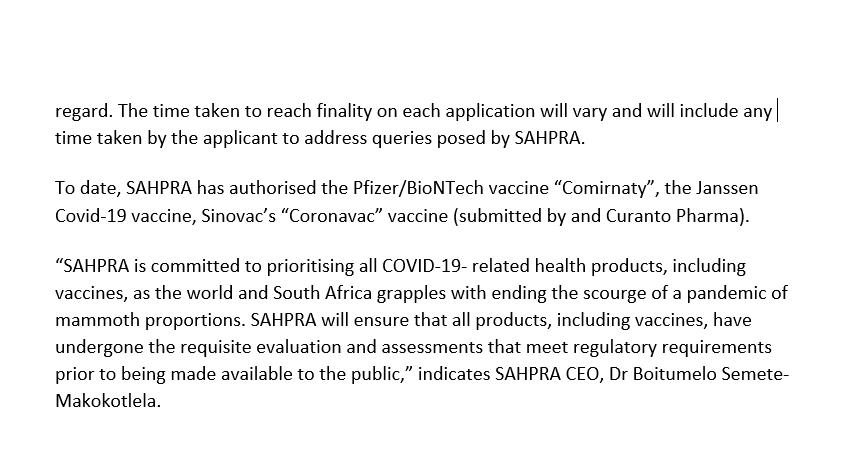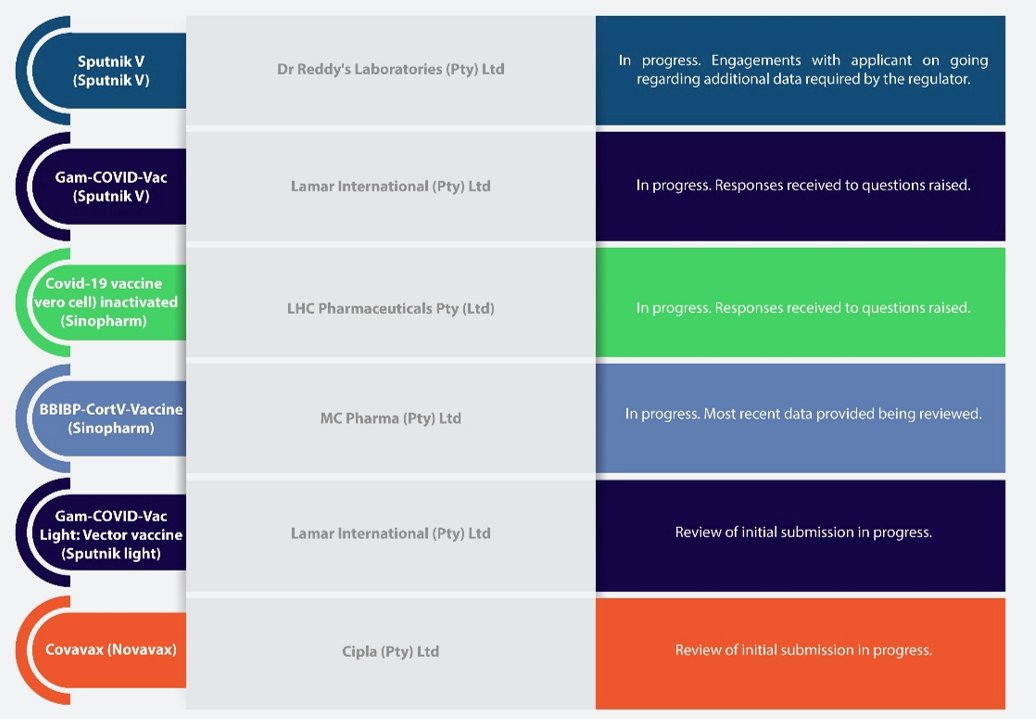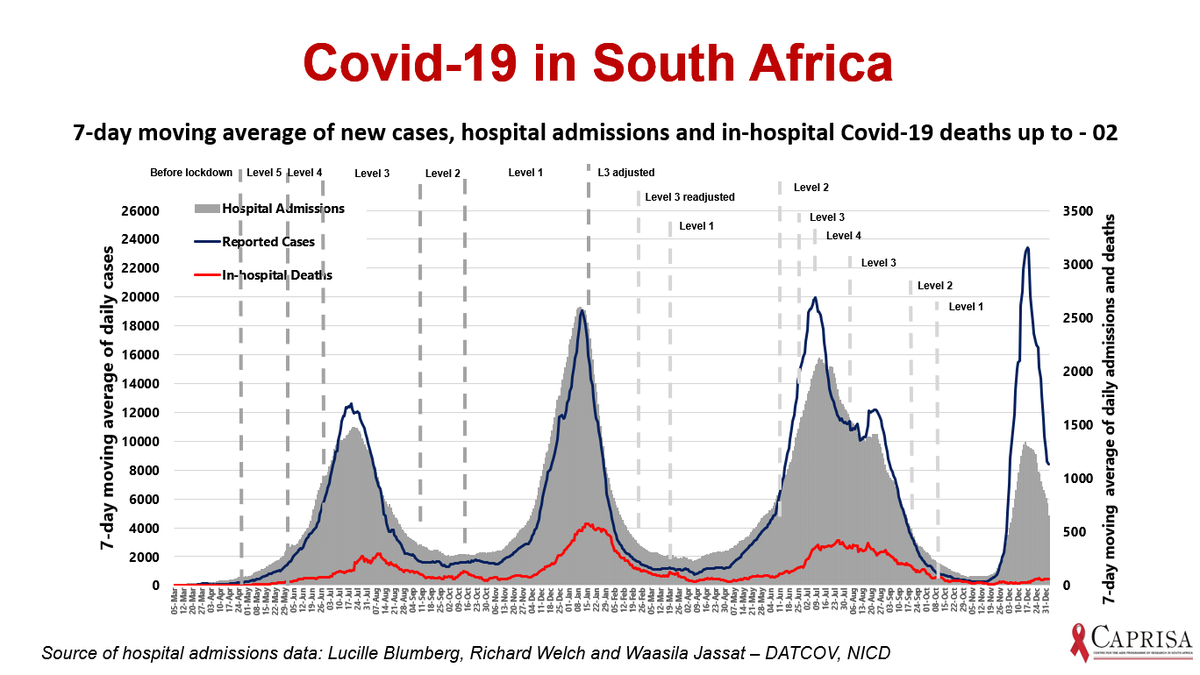
[Thread] 1. The LATEST on #Omicron in SA
@Dr_Groome of @nicd_sa:
1. Almost 99% of all new #COVID19 cases in SA now = #Omicron (Omicron = red on table, see Nov/Dec)
2. Extremely low proportions of other variants are currently detected through sequencing
@Dr_Groome of @nicd_sa:
1. Almost 99% of all new #COVID19 cases in SA now = #Omicron (Omicron = red on table, see Nov/Dec)
2. Extremely low proportions of other variants are currently detected through sequencing

2. @Dr_Groome:
1. SA reached its #Omicron peak on 15 Dec (22,588 new #COVID19 cases on that day)
2. Reported cases = only +/- 10% of the actual cases
3. There's been a small increase in new cases over Xmas, but we have seen persistent decreases in terms of 7 day moving averages
1. SA reached its #Omicron peak on 15 Dec (22,588 new #COVID19 cases on that day)
2. Reported cases = only +/- 10% of the actual cases
3. There's been a small increase in new cases over Xmas, but we have seen persistent decreases in terms of 7 day moving averages

3. @Dr_Groome:
1. Previous waves were longer and waves started and ended a few weeks apart in different provinces. With #Omicron the wave is much steeper and provinces followed each other much quicker
2. Gauteng (where SA's Omicron wave started) has exited its 4th (Omicron) wave
1. Previous waves were longer and waves started and ended a few weeks apart in different provinces. With #Omicron the wave is much steeper and provinces followed each other much quicker
2. Gauteng (where SA's Omicron wave started) has exited its 4th (Omicron) wave

4. @Dr_Groome:
1. Under 10 year olds: incidence = lowest out of all age groups, so while under 5 incidence = slightly higher than in previous waves, still = low incidence
2. 20-39: Incidence higher than in other waves
3. 60+: Incidence decreasing in last 2 waves (vax started)
1. Under 10 year olds: incidence = lowest out of all age groups, so while under 5 incidence = slightly higher than in previous waves, still = low incidence
2. 20-39: Incidence higher than in other waves
3. 60+: Incidence decreasing in last 2 waves (vax started)
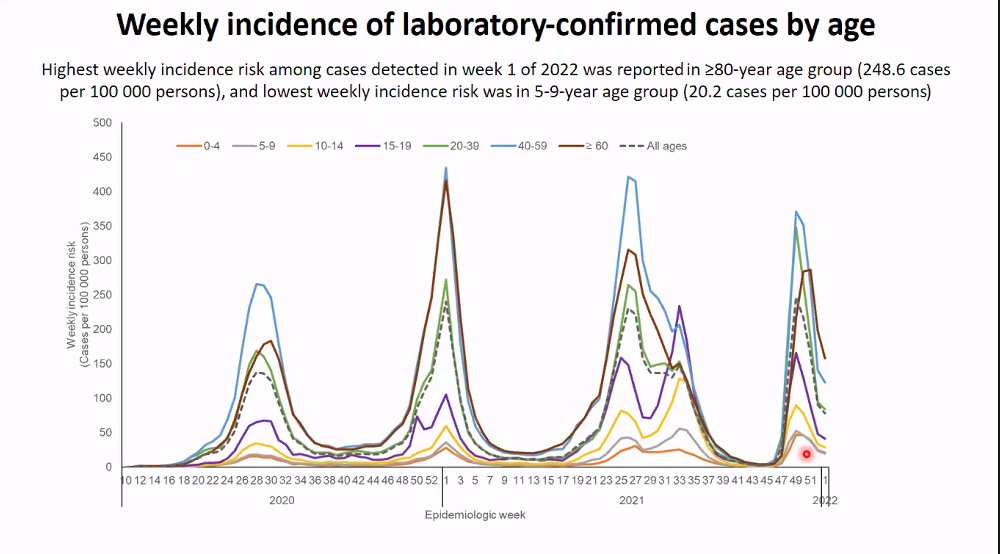
5. @Dr_Groome:
1. Gauteng = exited 4th wave
2. All provinces now show a downward trend in new #COVID19 cases
1. Gauteng = exited 4th wave
2. All provinces now show a downward trend in new #COVID19 cases

6. @Dr_Groome:
1. Average national test positivity rate for week of 2 Jan = 24.4% (6.5% down from previous week).
2. + test rate on 13 Jan = 14.3%
3. Down slope of the #Omicron wave won't be as steep as the up slope (so infections decreasing slower than what they had increased)
1. Average national test positivity rate for week of 2 Jan = 24.4% (6.5% down from previous week).
2. + test rate on 13 Jan = 14.3%
3. Down slope of the #Omicron wave won't be as steep as the up slope (so infections decreasing slower than what they had increased)

7. @Dr_Groome:
1. Test positivity rates in all provinces have been decreasing over the past two weeks
2. Country maps (below): Look at how the test + rates in the northern and eastern parts of SA have decreased (4th map)
1. Test positivity rates in all provinces have been decreasing over the past two weeks
2. Country maps (below): Look at how the test + rates in the northern and eastern parts of SA have decreased (4th map)

8. @Dr_Groome:
1. The graph shows the 7 day moving averages for test + rates
2. GP = 1st province to reach a peak (40% test + rate at peak, now at about 17%)
3. There is now a consistent decrease in + rates in all provinces
1. The graph shows the 7 day moving averages for test + rates
2. GP = 1st province to reach a peak (40% test + rate at peak, now at about 17%)
3. There is now a consistent decrease in + rates in all provinces

9. @Dr_Groome:
1. At the beginning of #Omicron the 20-29 age group had the highest test + rates, also high rates in 30-39, but those peaked in early Dec
2. Older age groups increased later
3. Peaks in different age groups = similar test + rates
3. All age groups = decreasing
1. At the beginning of #Omicron the 20-29 age group had the highest test + rates, also high rates in 30-39, but those peaked in early Dec
2. Older age groups increased later
3. Peaks in different age groups = similar test + rates
3. All age groups = decreasing

10. @Dr_Groome:
Summary:
1. #Omicron infections = decreasing at a slower rate than what they increased
2. Omicron waves in all 9 provinces have peaked
3. Although #COVID19 cases among younger people were more common at the beginning of the wave, that changed as the wave moved on
Summary:
1. #Omicron infections = decreasing at a slower rate than what they increased
2. Omicron waves in all 9 provinces have peaked
3. Although #COVID19 cases among younger people were more common at the beginning of the wave, that changed as the wave moved on

• • •
Missing some Tweet in this thread? You can try to
force a refresh




